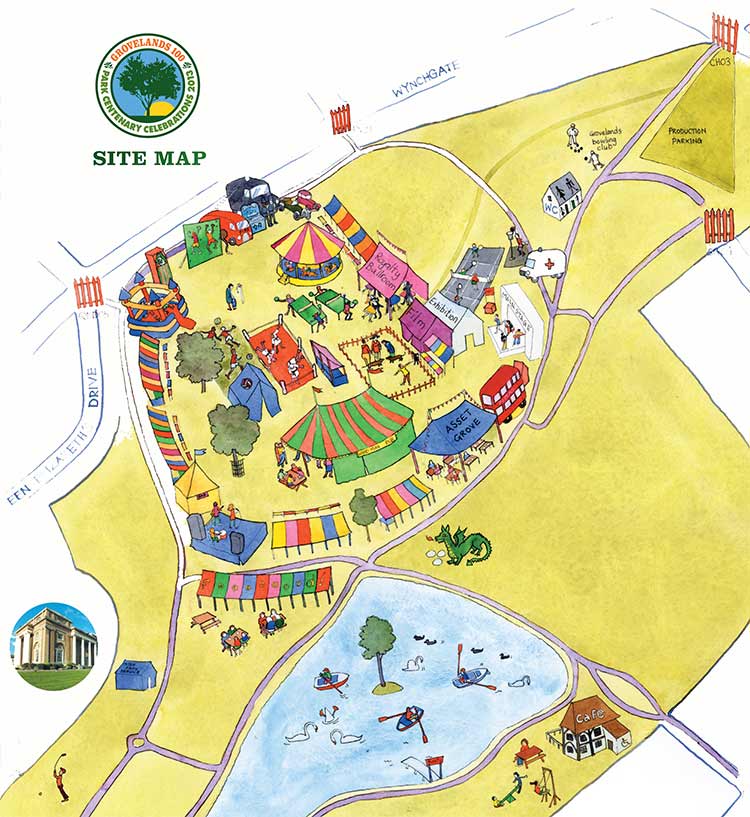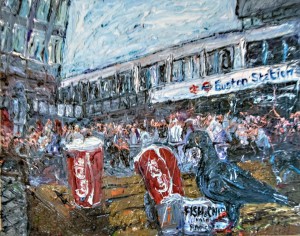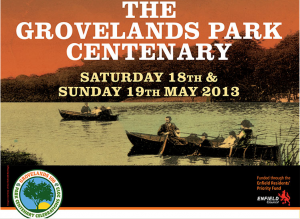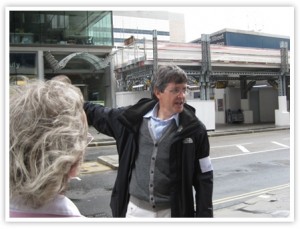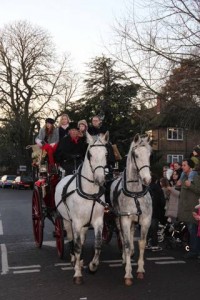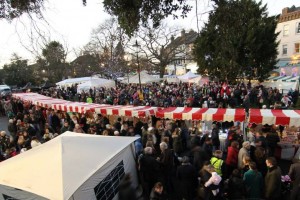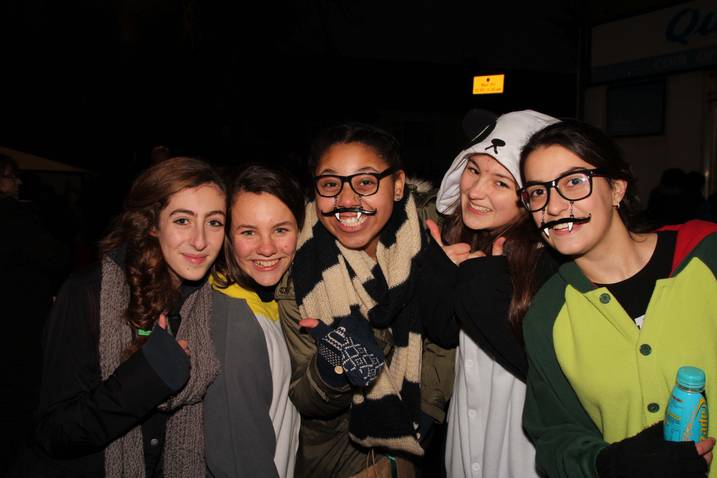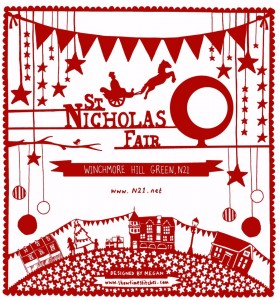At 2pm on 12 April 1913 the gates of Grovelands Park were opened to admit the public for the first time. Before long the park was full of people, with a liberal smattering of police, there to prevent possible attempts at disruption from the suffragettes – Mrs Pankhurst had been released from prison that very morning. What if they got up to their ‘old tricks’?
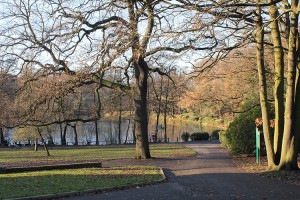 The weather wasn’t entirely kind. Though the sun broke through the clouds from time to time, the opening ceremony was greeted with a brief sleet shower. The Lord Mayor, Sir David Burnett, and the vast entourage of guests invited by the Parks Committee (and those who had paid two shillings for the honour of joining them) were unaffected however – they were in the marquee in front of the mansion, which was decorated for the occasion with flags and artificial flowers.
The weather wasn’t entirely kind. Though the sun broke through the clouds from time to time, the opening ceremony was greeted with a brief sleet shower. The Lord Mayor, Sir David Burnett, and the vast entourage of guests invited by the Parks Committee (and those who had paid two shillings for the honour of joining them) were unaffected however – they were in the marquee in front of the mansion, which was decorated for the occasion with flags and artificial flowers.
The Lord Mayor’s progress to the ceremony was accompanied a guard of honour of boy scouts, playing, according to The Recorder, an ‘alarming rattle of drum and bugle’. Gratitude should be expressed to the Chairman of the Committee and Council for acquiring the land, said the Lord Mayor, who remembered Southgate and Winchmore Hill from when he was a boy. The park would prove ‘a boon to present as well as to future generations who would praise [their] wisdom in acquiring it for all time’.
At least, that is the rather dignified account given in The Recorder. An account from a local resident in the same issue tells a rather different story, reading more like the script of a Carry On film.
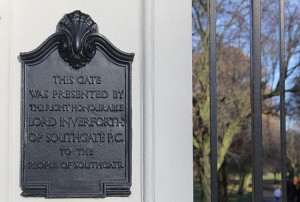 Virtually no one had paid for the tickets, which were locally thought to be very overpriced. There were a number of false alarms when the Lord Mayor’s footmen, and then the city sword bearer, appeared to check that everything was in order for his entrance, and were mistaken for the man himself. Later, as the marquee was on private property, the Lord Mayor had to process through a gap in the iron railings mid ceremony and into the park. Instead of returning for a vote of thanks, he then disappeared into the house for tea and cake. He had to be retrieved by embarrassed local dignitaries to complete the ceremony, all the time the crowd dashing in and out of the marquee as they second guessed what was actually supposed to be happening.
Virtually no one had paid for the tickets, which were locally thought to be very overpriced. There were a number of false alarms when the Lord Mayor’s footmen, and then the city sword bearer, appeared to check that everything was in order for his entrance, and were mistaken for the man himself. Later, as the marquee was on private property, the Lord Mayor had to process through a gap in the iron railings mid ceremony and into the park. Instead of returning for a vote of thanks, he then disappeared into the house for tea and cake. He had to be retrieved by embarrassed local dignitaries to complete the ceremony, all the time the crowd dashing in and out of the marquee as they second guessed what was actually supposed to be happening.
But the purchase of the park, for the local people, for all time, had been a great triumph for the area.
Originally heavily wooded, the lands which came to be called Grovelands had once been part of the great Middlesex Forest. Later, under the name Lords Grove, it is believed to have been owned by Lord Burghley, and then by James Brydges, the 3rd Duke of Chandos.
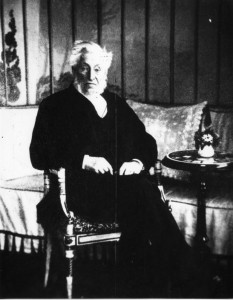
In 1796, the estate was sold to brewing magnate Walker Gray who commissioned the famous architect John Nash to design the house, and Humphrey Repton, to advise on the surrounding landscape. Repton believed that house and landscape should be a unity, and is thought to have been responsible for the lake and the ha-ha, though sadly Repton’s Red Book for Grovelands, which he set out his designs for the park, appears to have been lost.
Between 1835 and 1885, the estate became the property of John Donnithorne Taylor, before passing on his death to his son and then his grandson, Captain Taylor of the Welsh Guards. In 1902, the whole of the Taylor estate was put on the market.
Alan Dumayne in Southgate, a glimpse into the past tells us that a consortium planned to transform Grovelands estate into an ambitious garden city, with wide boulevards and substantial houses dotted among the trees, but somehow these plans never materialised, and in 1911, Southgate District Council went ahead with a purchase of 64 acres of the estate, later extending it to 91 acres. The refashioning of the park for the public was conducted to the design of landscape architect Thomas Mawson, also responsible for Tatum Park, and the very first president of the Landscape Institute.
As with Broomfield Park, the purchase wasn’t supported by everyone in the area. Was a second park in the area needed? Broomfield Park had opened only 10 years before. Some feared that the purchase would bring an unwelcome rise in the rates. But nevertheless, go ahead it did, and we have Southgate District Council to thank for Palmers Green, Southgate and Winchmore Hill being among the greenest areas in London.
The foresight of those counsellors 100 years ago, and the important part Grovelands plays in all our lives will be celebrated this weekend in an event packed two day festival in the park.
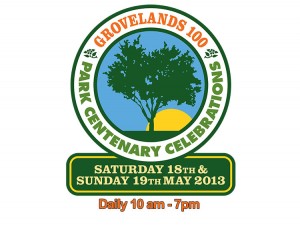 Organised by the Friends of Grovelands Park, The festival includes music on two stages, boats on the lake for the first time in over 30 years, a dog show, dance, film, poetry, photography, and a fair with a variety of stalls.
Organised by the Friends of Grovelands Park, The festival includes music on two stages, boats on the lake for the first time in over 30 years, a dog show, dance, film, poetry, photography, and a fair with a variety of stalls.
Celebrations kicks off on Saturday with an Edwardian themed historical pageant involving local schools and community groups. Civic dignitaries will officially open the proceedings to replicate the original 1913 opening by the Lord Mayor of London – though hopefully without the sleet and the mishaps of 1913. For full details click here
It looks set to be a great weekend. Go!
All images by kind permission of the Friends of Grovelands Park except where otherwise stated.
